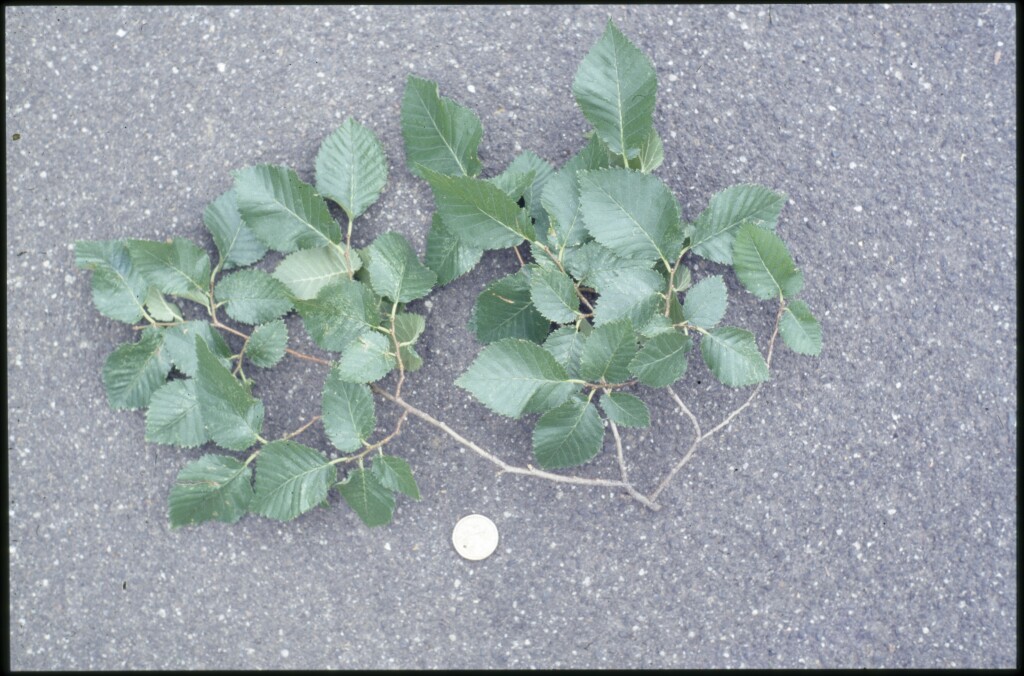Ulmus procera
Salisb. English ElmTree to 40 m tall, crown broadly columnar, trunk extending well into the crown; suckers present. Leaves broadly ovate to broadly obovate, 4–9 cm long, undulate; upper surface dull, dark green, scabrous; apex abruptly acuminate; base oblique, cordate on one side; margins shallowly double-serrate; veins 10–13; petiole 5–10 mm long; stipules narrow triangular, ovate or obovate, 6–18 mm long. Fruit a ± flat, orbicular samara, 10–17 mm wide, broadly winged. Flowers winter–spring.
Wim, VVP, GipP, OtP, Gold, CVU, DunT, NIS, HSF, HNF, Strz. Native to Europe, grown as an ornamental, naturalised in Victoria. Seeds are usually sterile, most populations are formed by suckering plants growing from nearby parent trees.
Morphologically similar to Ulmus ×hollandica, but distinguished by its generally smaller, round leaves, hairy stems, and columnar canopy shape. Many plants grown in Melbourne are possibly hybrids between U. procera and U. minor Miller making satisfactory determinations difficult (Spencer 1997). Furthermore, most naturalised populations of U. procera and Ulmus ×hollandica consist of suckering plants. Care needs to be taken when identifying suckering material, as leaves tend to become atypical on suckering, young or epicormic shoots. Leaf material taken from the crown is usually required to adequately identify these two species.
 Spinning
SpinningSpencer, R.D. (1997). Horticultural flora of south-eastern Australia: Dicotyledons part 3. UNSW Press.

